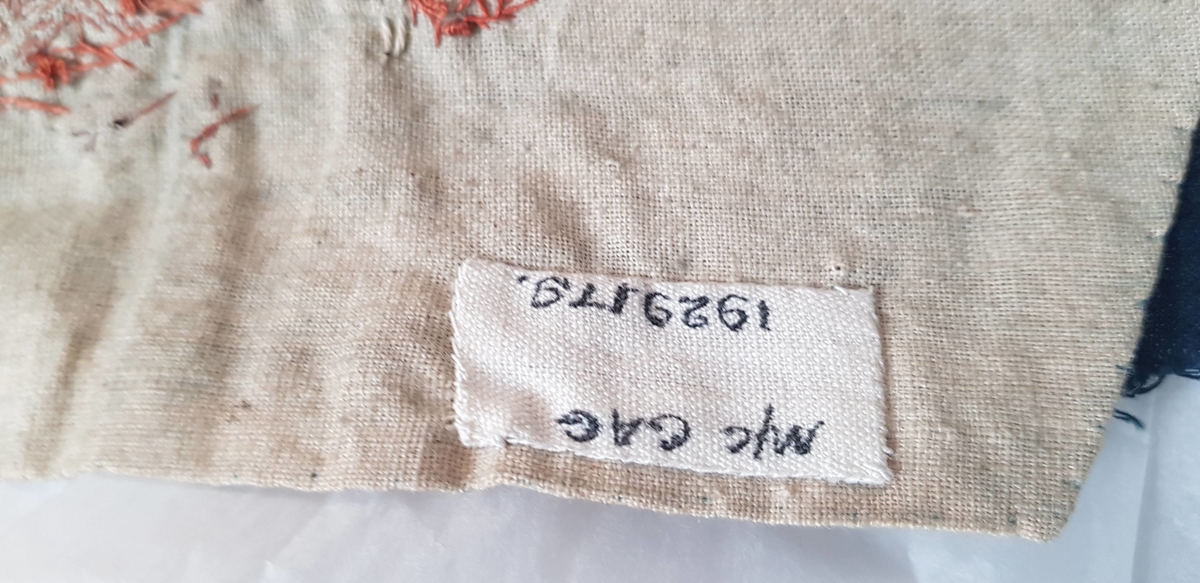textile fragment
Summary
Previously catalogued as part of a waistcoat. Dark blue and black checked cotton with a linen backing, heavily embroidered in gold and silver thread, couched with brown silk. Stitches; couching. Pattern; simple scrolling and plain hands; small pieces of metal chain and spangles and small pieces of applied red cloth; 5.1cm woven band of metal and red silk inserted in the opening.
Display Label
The Hashimi (Anglicised spelling from the original Hashmi) is a traditional Iraqi dress that is mostly worn by Arab women, and other non-Arab ethnic groups who adopted it, for instance, within Kurdish culture. The style of this particular embroidery originates in the Sumerian civilization. Whilst it is thought to get its name from the women of the Banu Hashim clan, who are famous for wearing them, let me tell you a story about another Hashimi dress. My mother had a very beautiful and precious one. I see it clearly in my mind’s eye. I remember all the details of the dress: its cut, its colour, and its fabric with perfect golden spangles. But after the imposition of economic sanctions on Iraq by powerful countries, including Britain, the Iraqi people went through a difficult time, and food was scarce. And so my mother had to sell her Hashmi dress to provide food for several days. Yes, she made lots of money from selling that dress, but we lost many irreplaceable memories too. And now all these years later, I find what looks to be part of another Hashmi dress. This time locked inside a box mis-labelled with the word ‘Moorish’. The label itself is an act of barbarism that further marginalises and silences cultures, histories, and people. To me, the word ‘Moorish’ might as well read ‘Others’. That is, the ‘Others’ from countries unrecognisable to the museum, the ‘Others’ who don’t easily fit somewhere. The ‘Others’ who are subject to the power of museums. I wish this piece was in Iraq with my mother, aiding the memory of her beautiful Hashmi dress. Instead, it stays in its box, in company with the ‘Others’, each waiting for you to hear, see, and feel their stories. As an artist, I had access to the Manchester Art Gallery collection at Platt Hall and in the textile room, I found a piece of me, a piece of Iraq inside that room, a paradox of buying and selling. Perhaps this also belonged to a mother whose poverty forced her to let a valuable piece go. Kani Kamil, 2022
Object Name
textile fragment
Dimensions
size: 66cm x 30.5cm
accession number
1929.179
Collection Group
Place of creation
Turkey
Medium
Credit
Bequeathed by Mrs Ruth Emma Day, 1929
Legal
© Manchester Art Gallery


